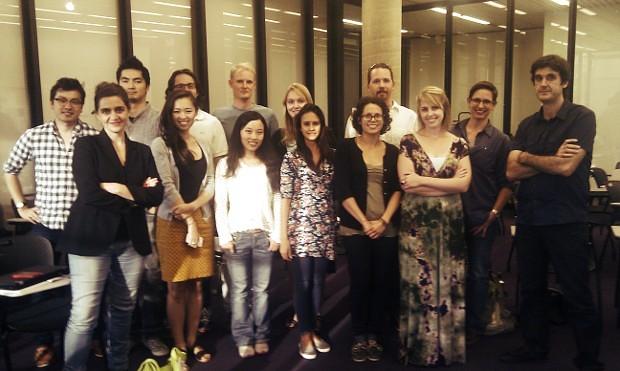¡Ya hemos comenzado el curso en Harvard! @jlvmateo y @belindatato somos este cuatrimestre de otoño profesores invitados en el máster del GSD de Harvard. Nuestro studio se llama “Networked Urbanism“.
El pasado día 30 de agosto fue la presentación del curso, el llamado “lottery day” donde todos los estudiantes de la escuela asisten a las presentaciones de los profesores invitados cada cuatrimestre y después eligen su grupo favorito. Esta vez, compitiendo por el favor de los estudiantes, podíamos encontrarnos con estrellas del firmamento arquitectónico de las últimas décadas (Nathalie de Vries de MVRDV, Christian Kerez, Ben van Berkel, …).
Esta es una foto del momento de la presentación del curso #networkedurbanism que nos hizo Blanca Abramek (@tendrebarbare) desde el auditorio:

La presentación original consta de una serie de GIFs animados que se reproducen en bucle mientras se explica cada apartado. Como es difícil de embeber aquí en ese formato, a continuación la incluimos en formato vídeo y con el guión de texto:
GSD Networked Urbanism – Presentation by Ecosistema Urbano
Finalmente nos eligieron un grupo de estudiantes con perfiles muy distintos e interesantes, una mezcla de arquitectos, landscape architects y planners.

Si queréis estar al tanto de la producción de los estudiantes podéis seguir el curso en el blog del studio www.networkedurbanism.com donde estamos compartiendo enlaces y referencias. En Twitter podéis seguir #networkedurbanism donde estamos compartiendo información permanentemente.
Os dejamos con el brief del curso. Enjoy it!
Course Description
The boundary between public and private is shifting. The one between personal and professional is becoming increasingly blurred. This rapid evolution has led us to conceive and experience physical space differently than in the past. Real-time connectivity, ubiquity, unlimited access to large flows of information and knowledge, have also altered the way we relate to and work with each other. However, despite those rapid social and technological changes, city planning processes worldwide remain dull, bureaucratic and insensitive to how humans experience the city.
This studio will bring an alternative to the traditional way of designing cities from a bird’s eye view, and a single designer’s perspective. It will not only examine the physical dimension of the city, but also its social processes and fluxes.
Students will be encouraged to use this data to develop individual and collective initiatives that generate spontaneous transformations and set up conditions for change instead of delivering a completely finished product.
In a connected world, an urban design should be the result of an open and multilayered network of creative designers, technical experts, citizens and stakeholders. The studio will challenge the students to develop designs that reconcile the existing physical conditions—that respond to lifestyles from the past—with the emerging needs of the citizens through network design thinking.
We will also explore the new role of a designer as an activator, mediator and curator of social processes in a networked reality in which citizens have shifted from being passive receivers or consumers to active producers or prosumers.
Main topics will include: communication and information technology, open data, mobility, open source, transparency/mapping, activism, design thinking and environment awareness.
